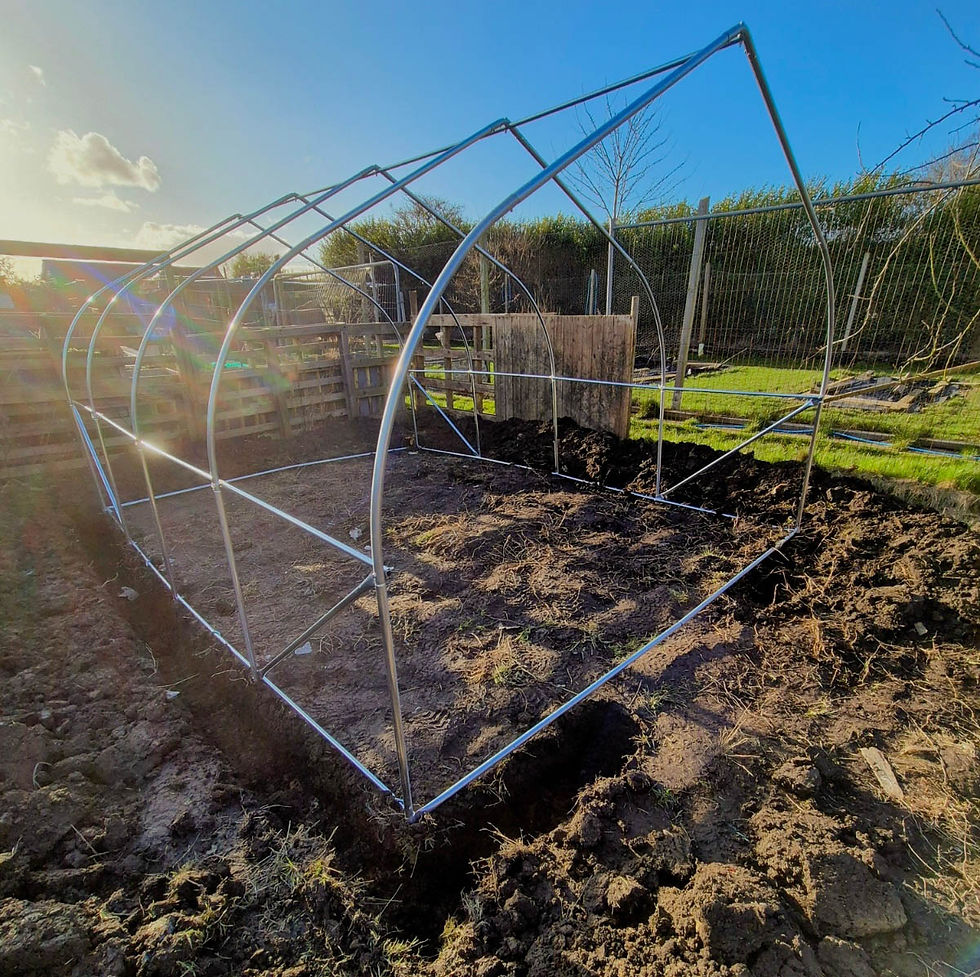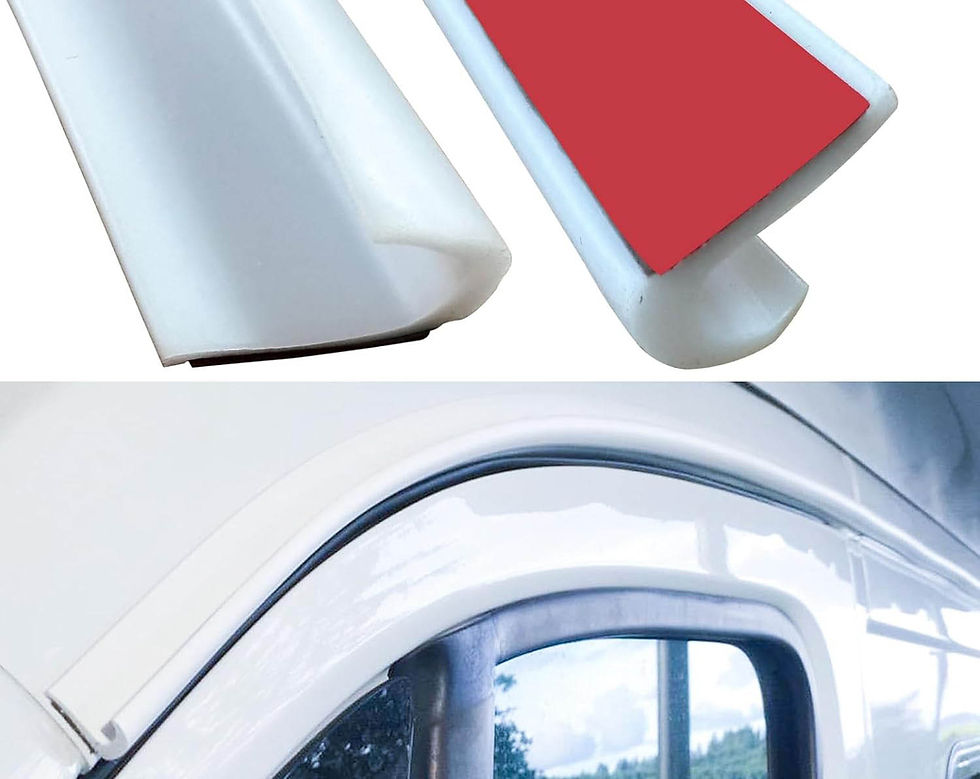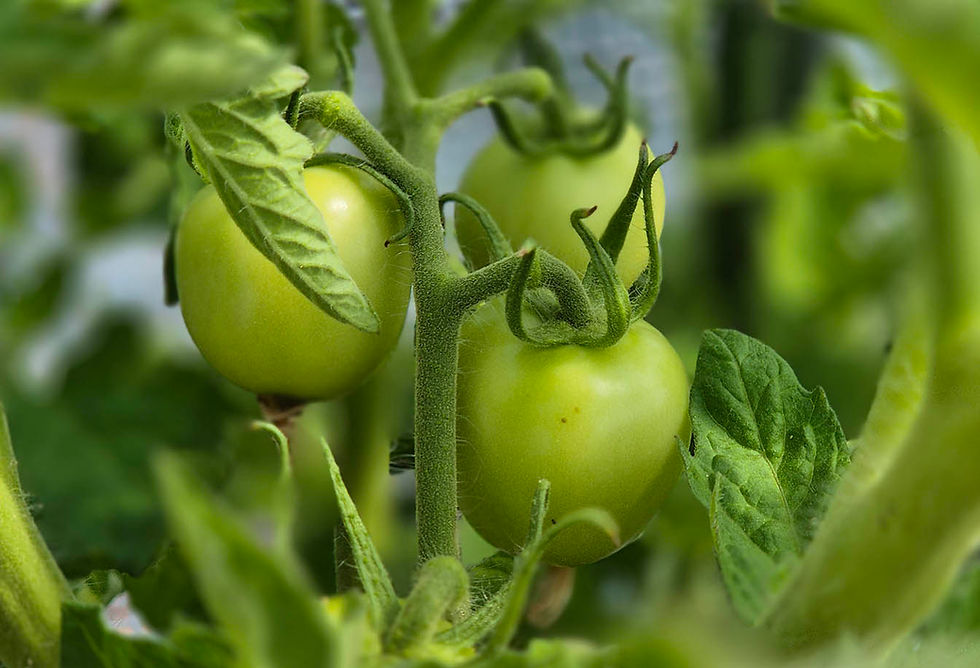Extending Your Growing Season in Sheffield: Polytunnels and Greenhouses for Allotment Gardens
- Gary Wolstenholme

- Jul 19
- 9 min read
Sheffield, nestled in the heart of Northern England, offers a fantastic environment for allotment gardening. However, the British climate, with its unpredictable springs and early autumns, can often limit the growing season. This is where the magic of polytunnels and greenhouses comes into play, offering a sheltered haven that can significantly extend your harvesting window, allowing you to enjoy fresh produce for more of the year.

The Great Debate: Polytunnel vs. Greenhouse – And Everything In Between
Choosing the right structure for your allotment can feel daunting, with a range of options each presenting its own set of advantages and considerations. Let's break down the most common choices:
1. Budget Polytunnels: The Economical Entry Point
For those just dipping their toes into protected growing, budget polytunnels offer an incredibly cost-effective solution. Typically featuring a lightweight metal or plastic frame covered with a polyethylene sheet, these are often available in smaller sizes, perfect for a single raised bed or a dedicated growing area.
Pros: Very affordable, relatively easy to erect (often a weekend project), good for beginners, and can be moved if needed. The diffused light through the polythene can be beneficial for some plants, reducing scorching.
Cons: Less durable than more robust options, susceptible to wind damage if not properly anchored, and the plastic cover may need replacing every few years due to UV degradation. Ventilation can be basic, often relying on roll-up sides or end doors.
Best For: Allotment holders on a tight budget, those wanting to experiment with protected growing, or smaller plots where space is a premium.
2. DIY Options for Building Your Own Polytunnel: The Creative Gardener's Choice
For the resourceful and handy gardener, building your own polytunnel can be a rewarding and often more tailored experience. Common DIY methods involve using materials like PVC pipes, rebar, or even salvaged timber for the frame, covered with horticultural-grade polythene.
Pros: Highly customizable to your specific needs and plot size, potentially very cost-effective if you source materials cleverly, and offers immense satisfaction from a self-built project. You can often build a stronger, more robust structure than a budget kit.
Cons: Requires significant time, effort, and some practical skills. Sourcing appropriate materials can be challenging, and ensuring structural integrity, especially against Sheffield's winds, is crucial. Mistakes in construction can lead to instability.
Best For: Experienced DIY enthusiasts, those with specific size or shape requirements, or gardeners looking for a truly bespoke solution.
3. Commercially Available Polytunnels: The Robust Workhorse
Stepping up from budget and DIY, commercially available polytunnels from specialist suppliers offer a more robust and professional solution. These typically feature stronger steel frames (often galvanized for longevity) and thicker, more durable polythene covers, designed for years of service. They come in a wide range of sizes, from small walk-ins to large commercial-grade structures.
Pros: Excellent durability and longevity, designed to withstand harsher weather conditions, superior ventilation options (e.g., side vents, double doors), and often come with comprehensive instructions and support. Larger sizes allow for significant crop production.
Cons: Higher initial investment compared to budget or DIY options. Installation can be more complex and may require multiple people or even professional help for larger models.
Best For: Serious allotment growers, those planning long-term protected cultivation, or anyone seeking a reliable and spacious growing environment.
4. A Traditional Greenhouse: The Classic Choice
The quintessential symbol of protected growing, traditional greenhouses, typically made from glass or polycarbonate panels set in an aluminium or wooden frame, offer a different aesthetic and growing environment.
Pros: Excellent light transmission (especially glass), very durable and long-lasting, aesthetically pleasing, and provides a stable environment with good heat retention. Less prone to tearing or flapping in wind compared to polythene.
Cons: Significantly more expensive than most polytunnel options, can be very heavy and require a solid foundation, and glass can break (though polycarbonate is more resilient). Can overheat quickly in direct sun without proper ventilation and shading.
Best For: Gardeners prioritizing aesthetics and long-term durability, those growing heat-loving plants that benefit from consistent warmth, or those with a larger budget.

Essential Hints and Tips for Success
Once you've chosen your structure, a few key considerations will ensure its longevity and your growing success:
Reinforcing the Structure of a Polytunnel to Help It Last
Sheffield can be windy, and a well-anchored polytunnel is crucial.
Dig Trenches: For polytunnels, burying the skirt (the excess polythene at the base) in a trench around the perimeter is the most effective way to anchor it securely and prevent wind from getting underneath. Backfill with soil and compact it well.
Base Rails/Foundation: For more permanent structures, consider a treated timber base rail or even a concrete plinth to which the frame can be securely bolted.
Internal Bracing: Add extra cross-bracing or diagonal supports to the frame, especially at the ends and corners, to increase rigidity.
Anti-Hot Spot Tape: Apply anti-hot spot tape to the frame where it touches the polythene. This prevents the frame from heating up and potentially burning or degrading the plastic, extending its life.
Regular Checks: Periodically check all fixings, ropes, and the polythene for any signs of wear or damage, repairing them promptly.

Collecting Water from the Surface of a Polytunnel or Greenhouse
Water is a precious resource, and collecting rainwater from your structure is both eco-friendly and cost-effective.
Guttering Systems: For greenhouses, purpose-built guttering systems are readily available and easily attach to the eaves, directing water into a water butt. J-section self-adhesive guttering designed for motorhomes can also be affixed to the sides of a polytunnel to divert water into a water butt or tank.
Polytunnel Drainage: While polytunnels don't have traditional gutters, you can improvise. Dig a shallow trench along the side where water naturally runs off. Line it with a permeable membrane and fill with gravel to create a French drain, directing water towards a buried water butt or collection point. Alternatively, position large containers or barrels directly under the drip line at strategic points.
Sloping Ground: If your allotment has a natural slope, consider positioning your structure so that runoff can be easily channelled into a collection system at the lower end.

Adding Ventilation to a Polytunnel or Greenhouse and Why That's Important
Ventilation is paramount for healthy plant growth and preventing disease.
Temperature Control: On sunny days, temperatures inside can soar, cooking your plants. Ventilation allows hot air to escape, preventing overheating.
Humidity Reduction: High humidity creates a perfect breeding ground for fungal diseases like botrytis and powdery mildew. Air circulation reduces humidity.
Pollination: For fruiting crops, good airflow can aid in pollination, especially if you don't have many natural pollinators entering the structure.
Air Circulation: Prevents stagnant air, which can lead to weak, leggy growth.
Methods:
Doors and Vents: Ensure your structure has ample doors (ideally at both ends for a good through-draft) and roof or side vents.
Automatic Vent Openers: For greenhouses, these wax-filled cylinders expand with heat, automatically opening vents, providing passive ventilation even when you're not there. They can be adapted to open a DIY frame on a polytunnel too.
Roll-Up Sides: Many polytunnels feature roll-up sides, allowing for excellent airflow along the length of the structure.
Fans: For larger structures or very hot periods, an oscillating fan can help circulate air internally.

What Crops Will Thrive in a Polytunnel or Greenhouse
The extended season and protected environment open up a world of possibilities for Sheffield growers.
Heat-Loving Crops: Tomatoes, cucumbers, peppers, chillies, and aubergines absolutely adore the warmth and protection, producing much earlier and for longer than outdoors.
Early & Late Season Crops: You can get a head start on spring sowings of lettuce, spinach, radishes, and spring onions, harvesting weeks before outdoor crops. Similarly, you can extend the season for these into late autumn and even winter.
Fruiting Crops: Strawberries, raspberries, and even some dwarf fruit trees can thrive, offering earlier harvests and protection from pests and diseases.
Exotic Delights: With enough heat and care, you can even experiment with more exotic fruits like melons, sweet potatoes, and even small citrus trees.
Herbs: Many herbs, especially Mediterranean varieties like basil, oregano, and rosemary, will flourish, providing a continuous supply.
Winter Greens: With some fleece protection inside, you can grow hardy winter greens like perpetual spinach, kale, and some oriental leaves through the colder months.

By investing in and wisely managing a polytunnel or greenhouse, Sheffield allotment holders can transform their growing potential, enjoying a bounty of fresh, homegrown produce for a significantly extended period, making the most of every inch of their plot.
Happy growing!
It may be possible to source many items for your projects via The Shed site shop.
For anything else, the following list is provided as a source of information only.
Polytunnel Suppliers (Budget & Commercially Available Options):
Premier Polytunnels: A well-known UK manufacturer offering a wide range of polytunnels from smaller domestic sizes (e.g., 6ft wide) ideal for allotments to large commercial structures. They also supply polythene covers, accessories, and offer a construction helpline.
Northern Polytunnels (NP Structures Ltd): With over 50 years of experience, Northern Polytunnels offers robust garden and commercial tunnels, including their "EasyBuild Garden" range suitable for allotments. They pride themselves on heavy-duty steel frameworks and offer various covers.
Website: https://northernpolytunnels.co.uk/
First Tunnels: Another established UK supplier of a wide variety of polytunnels, from garden to commercial sizes. They offer different widths and polythene cover options.
Website: https://www.firsttunnels.co.uk/
Direct Polytunnels (Direct Plants): They offer heavy-duty polytunnel kits and components, emphasizing the longevity of their frames. Good for those looking for a sturdy budget option or specific parts.
Primrose: Offers a selection of polytunnels, often including more budget-friendly options, as part of their wider garden products range. Good for general garden supplies too.
B&Q: A major DIY and garden retailer that often stocks budget-friendly polytunnels and grow tunnels, particularly useful for smaller spaces or those on a very tight budget.
Aosom: UK distributors for the Outsunny brand of budget-friendly polytunnels and gardening accessories.
Traditional Greenhouse Suppliers:
Robinsons Greenhouses: A well-regarded UK manufacturer known for their high-quality, ultra-strong aluminium greenhouses. They have a long history and offer various styles and sizes.
Rhino Greenhouses Direct: Specialise in strong, British-made aluminium greenhouses with a 25-year guarantee. They focus on quality materials, good ventilation, and integral bases.
Website: https://www.greenhousesdirect.co.uk/
SW Greenhouses: Offer a range of aluminium and wooden greenhouses from various British manufacturers, with options for different sizes and styles like lean-to and dwarf wall.
Website: https://www.swgreenhouses.co.uk/
Elite Greenhouses: (Often sold through retailers like SW Greenhouses, but a popular British brand known for aluminium greenhouses).
DIY Polytunnel & General Allotment Supplies:
Premier Polytunnels (Accessories section): As mentioned above, they also sell individual polythene films, anti-hot spot tape, repair tape, netting, and various spare parts essential for DIY or maintenance.
Quickcrop UK: Offers individual components for building mini polytunnels, including timber, tubing, connectors, and polythene covers. Useful for smaller, custom DIY projects.
Knowle Nets: Specialise in various netting products, but also supply polytunnel accessories like polythene film, anti-hot spot tape, and repair tape.
Local Garden Centres (e.g., Valleyside Garden Centre in Sheffield): These are excellent for smaller items like tools, seeds, compost, plant supports, water butts, and potentially some basic greenhouse accessories or cloches. They often have staff with local knowledge.
Valleyside Garden Centre: https://www.valleysidesheffield.co.uk/
DIY Stores (e.g., Wickes, B&Q, Screwfix): Can be useful for sourcing general building materials like timber, PVC pipes, rebar (for DIY frames), screws, bolts, and sometimes even larger rolls of heavy-duty clear plastic sheeting (though not always horticultural grade).
Wickes: https://www.wickes.co.uk/
Agricultural/Horticultural Suppliers (online and local): For larger quantities of specialized polythene, irrigation supplies, or robust netting, consider suppliers geared towards commercial growers, even if you only need smaller amounts.
Earth Cycle: While primarily a supplier of composts and topsoils, they are a good example of a company providing bulk allotment essentials, including tools.
Tips for Purchasing:
Check Delivery: Many of these suppliers offer nationwide delivery within the UK, but always confirm shipping costs and delivery times to Sheffield.
Read Reviews: Look for customer reviews, especially concerning durability and customer service.
Compare Specifications: Don't just look at the price. Compare frame gauge, polythene thickness (micron/gauge), UV stability guarantees, and included features (doors, vents).
Consider Your Local Allotment Society: Your local allotment society in Sheffield might have bulk buying deals with suppliers or recommendations based on local experience. Speak to somebody in The Shed to see if they can help you.


